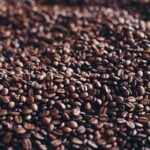Uses of Food Composition data, with a focus on Phosphorus
The data we compile and publish on the composition of foods is used by many different people, from researchers and health professionals, to industry and consumers. The data underpins research at the Quadram Institute, across Europe, and beyond, into the links between diet and health, whilst also helping to inform policy to promote a healthy lifestyle.
This figure gives just a few examples of users of food composition data:

Like painting the Forth Bridge, updating and producing new food composition data for a variety of uses is never ending. Our most recent update of the Composition of Foods Dataset available in Excel form here and in an open searchable website here.
We often work with specialist users of composition data to create specific datasets or to identify gaps and requirements in the current data. An example of this is work we have undertaken renal dietitians from York Teaching Hospital that identified limitations in the current phosphorous composition data for managing patients with chronic kidney disease.
Around 3 million people in the UK have chronic kidney disease and may require a special phosphorus-restricted diet as part of their long-term care. Limiting the amount of phosphorus in the diet is one of the first lines of management of hyperphosphatemia (elevated blood phosphate), a complication of chronic kidney disease. It is therefore important that dietitians have access to accurate data on the phosphorus content of foods.
However, the UK dataset does not currently hold sufficient detail for this use. The data we compile is specifically designed for use in the National Diet and Nutrition Survey and provides average values for foods, based on the UK population’s consumption pattern. This has limitations for dietitians dealing with patients with kidney disease because these average values do not identify the phosphorus content of specific products and brands a consumer would buy, and additionally report the total phosphorus content, without taking into account the chemical form or distinguishing between inorganic and organic sources. Added phosphorus (inorganic) is deemed to be the most significant dietary factor for haemodialysis patients. We have recently published the findings in a Journal of Kidney Care article including the potential for production of a phosphorus-specific food composition dataset which would help bridge the gap for renal dietitians in clinical practice. The outcomes of this review will be taken forward to explore funding opportunities in the future to attempt to redress some of the phosphorous composition issues.










